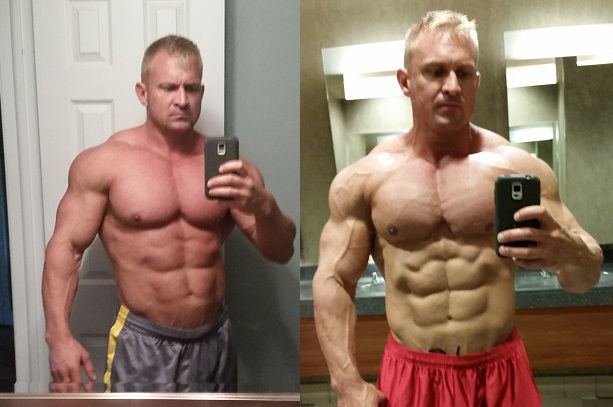Dieting is all about preserving muscle, not losing weight
- Steve Marteski
- May 5, 2017
- 3 min read
Dieting is much more about conserving muscle than it is about losing fat….The process of just losing weight is very straight forward…You burn more calories than you take in, and off it comes..And this can be done simply by eating less and less….While this is not always easy physically and psychologically, physiologically it is extremely simple, and anyone can do it, given enough reason….All you must do is look at the pictures we see of emaciated people in impoverished countries who don’t have enough food to eat, or look at historical pictures of starved prisoners of war….They lost a ton of weight, and every single one of them did…..So the notion that “I can’t lose weight” is a complete fallacy….You just won’t lose weight because it’s too hard..
Now that we have established that…the goal of our dieting is not to lose all of our muscle and tissue and have our ribs poking through our skin. Rather, it is to lose fat, and only fat. The tricky thing about burning fat is that you can’t burn it that fast, and even slower the leaner you get. So we must keep a slower pace of loss to avoid cannibalizing muscle for energy. Below are the three key elements of a diet that loses fat and not muscle:

Energy expenditure should not exceed the rate at which we can pull energy from fat - Once we are glycogen depleted, our body must pull energy from its stores..This can only be body fat, or muscle, as there is nothing else left. Where many people make a bad move is they assume if they get on the treadmill for an hour while glycogen depleted that they will burn more fat….NOT TRUE….You will burn fat, but as mentioned previously, we can only pull from our fat supplies so fast, and anything done in excess of this is invariably going to cause us to pull more from muscle, or collapse.
Focus on the time spent in a deficit, not total calories burned – Pivoting from #1, the amount of calories we eat in a day versus the amount of calories we burn in a day will dictate weight loss, but it will not dictate FAT loss. Consider two scenarios…..Two people, Brian and Tom both eat 2000 calories today and both expend 3000 calories, so both have a net loss of 1000 Calories….However, Brian runs for 1 hour upon waking then comes home and eats 1000 calories then sits on the couch and eats the rest of his meals throughout the day as he remains on the couch…. Whereas Tom gets up and eats 400 calories, walks for ½ hour, eats another 600 calories then goes and trains, eats again, then walks again later in the day. So…who loses more fat??? Tom by far….While Brian burns loads of calories first thing in the morning, he then comes home and has a big meal an stays still, so he really only spends that initial hour in a calorie deficit, where he was spending calories too fast to get from fat…So he burned a lot of muscle. Whereas Tom ate small amounts throughout the day and kept his energy expenditure slow and consistent…So he remained in a deficit throughout the day. Tom was burning fat for most of the day and ended up burning a lot more than Brian.
Timing your energy intake – This basically means you want to have energy when you need it, and not when you don’t…So positioning energy intake in the hour or so before training will accomplish two things….It will give you energy/fuel for a good workout, and it will also allow you to burn through the energy during your workout, so by the end of the workout you are depleted again and go right back into fat burning mode.



























Comments